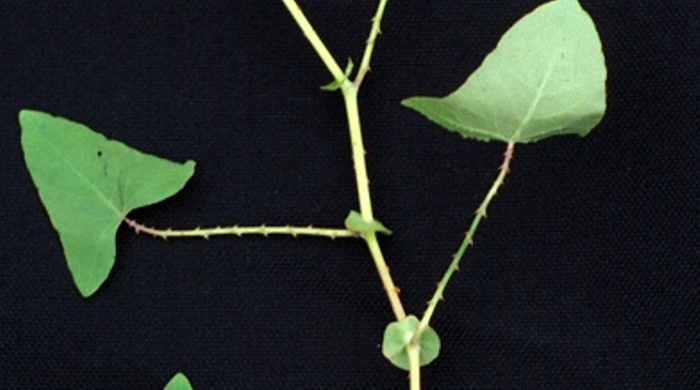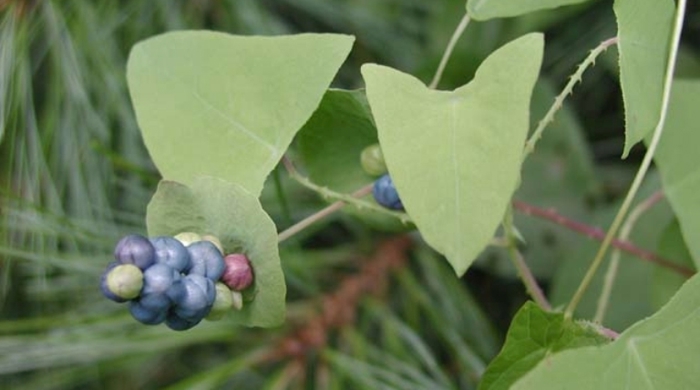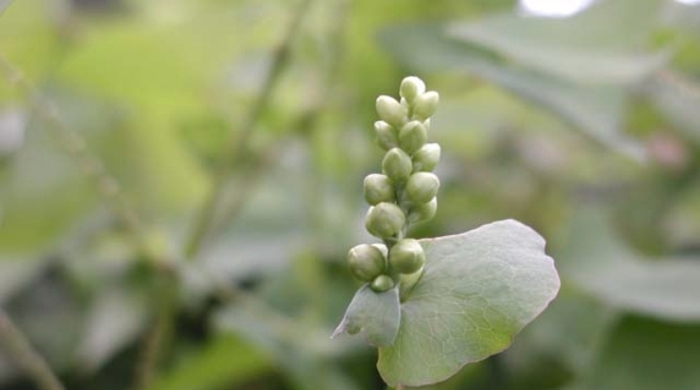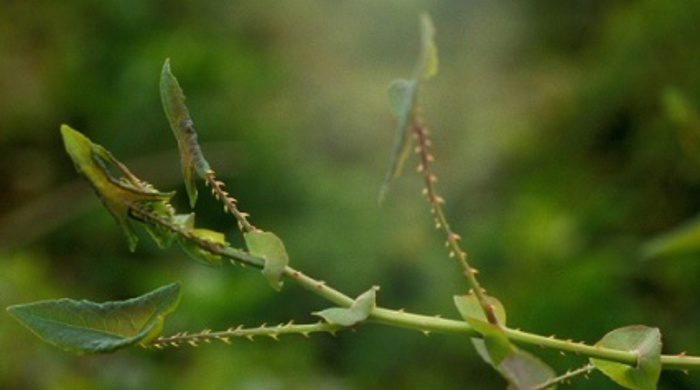Persicaria perfoliata syn. Polygonum perfoliatum
Devil's tail
Also known as:
Mile-a-minute weed, tearthumb
Family: Polygonaceae
Origin: Asia
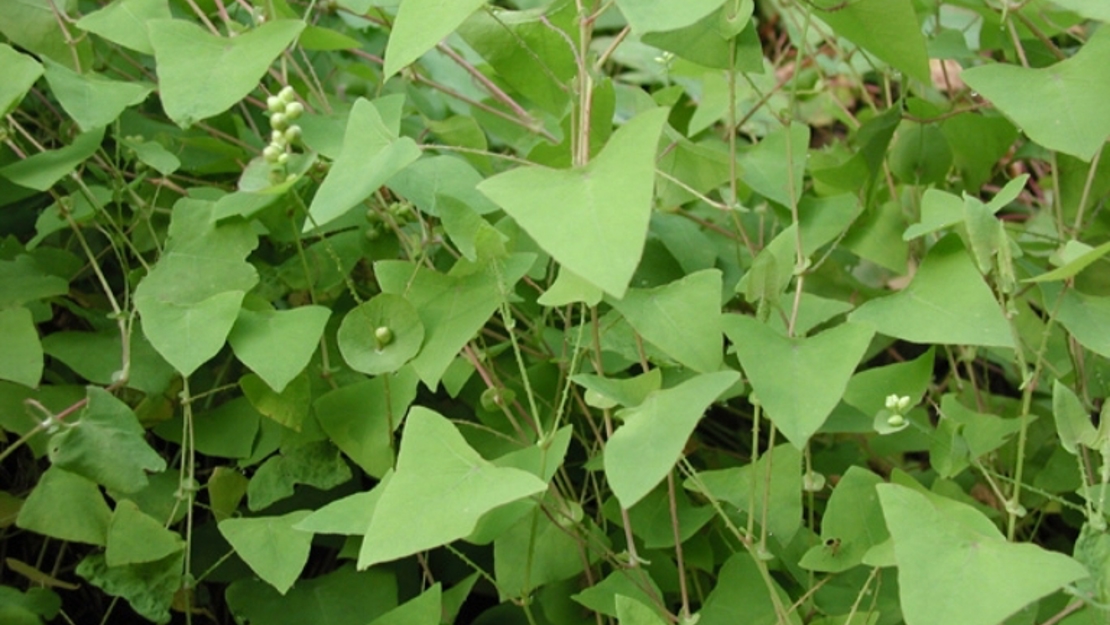
Regional Pest Management Plan (RPMP) status
- Whole region — Sustained control
- Hauraki Gulf Controlled Area Notice pest
General description
Sprawling, scrambling, climbing, annual vine < 6 m long. Stems are spindly and reddish, with downwards pointing barbs. Leaves are triangular and light green, with downwards pointing barbs on midrib.
Ocreas surround stem at intervals and are circular, cup-shaped and leafy. Flowers are small, white and borne in ocreas. Fruit is metallic blue and segmented.
What you need to know
To help protect our environment:
- You must not breed, distribute, release or sell devil's tail within the Auckland region.
- You must not plant devil's tail within the Auckland region, unless you are transferring an existing plant on your land to another location within the boundaries of the same property.
- You must destroy any devil's tail on land that you occupy if it has been planted in breach of the above rules and you are directed to do so by an authorised person.
Habitats
Open and disturbed areas, forest and riparian margins, forest gaps, roadsides, pastures.
Dispersal
Seeds dispersed by water and birds. Vegetative spread from roots.
Impact on environment
Suppresses juvenile tree growth. Likely to outcompete and smother native plants in open, disturbed habitats. Barbs may injure children and pets.
Control
Site Management
Follow up treated areas 3 times per year. Encourage natural regeneration of native plants or replant treated areas where possible after 2-3 treatments to establish dense ground cover and minimise reinvasion.
Recommended approaches
Physical control
Method: Dig out.
Plant parts requiring disposal: All parts.
Disposal options: Remove to greenwaste or landfill.
Biocontrol
Biocontrol is currently not available for this species.
Community agrichemical control recommendations
No qualifications: Cut stump and paste freshly cut base of stems with glyphosate gel. Foliar spray with 100ml glyphosate green per 10L of water.
Caution: When using any herbicide or pesticide please read the label thoroughly to ensure that all instructions and safety requirements are followed.
